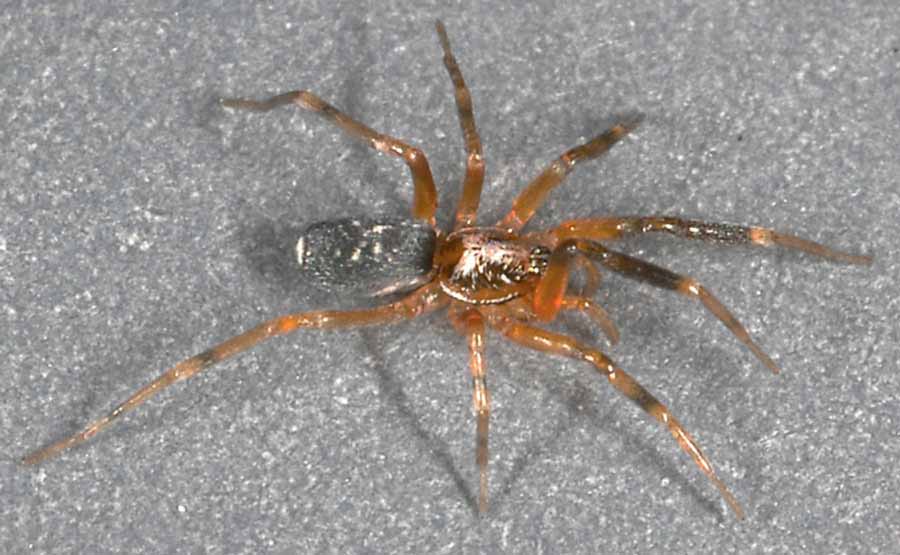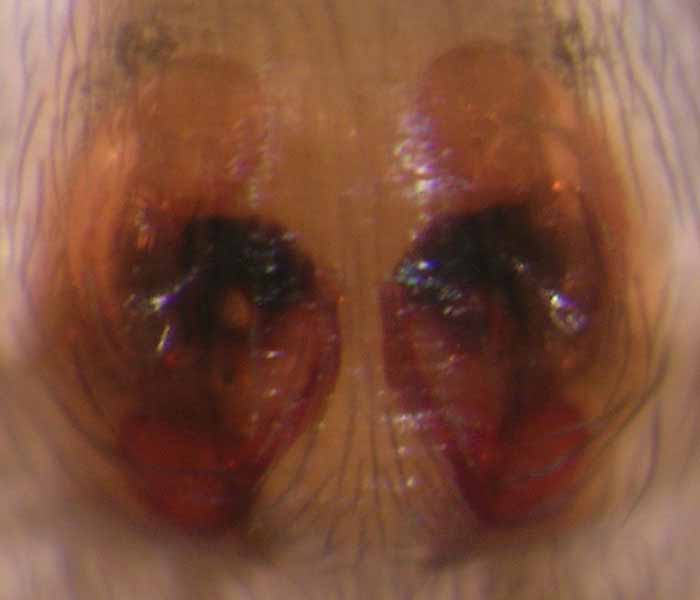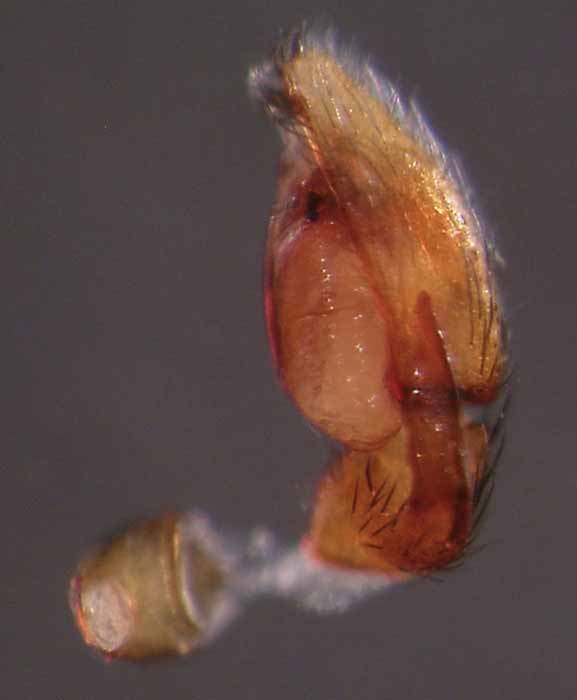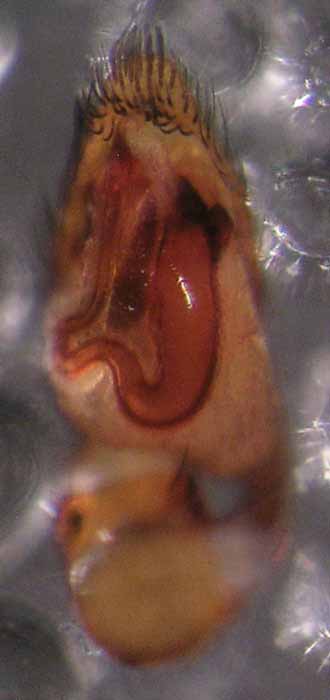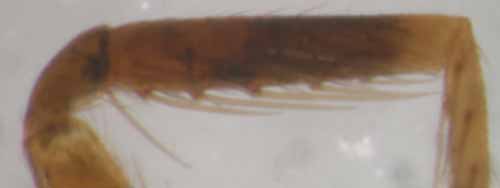Phrurotimpus mateonus
|
adult female, live |
|
adult male, live |
|
female genitalia; epigynum |
|
male genitalia; palp, lateral view |
|
male genitalia; palp, ventral view |
|
grape size comparison with adult spiders; male (left), female (right) |
|
diagnostic feature; several pairs of spines on ventral surface of tibia I |
Current valid name
Phrurotimpus mateonus Chamberlin and Gertsch (family Corinnidae)
Recognition and diagnostic features
Tiny dark spider with elongate abdomen, several pairs of spines on ventral surface of Tibia I, male abdomen glossy.
Related or similar species
Erigone dentosa
Spider
Body lengths when mature: male: 2.0 - 2.5 mm, female: 2.5 - 3.0 mm
Immatures resemble miniature adults.
Egg sac
No egg or egg sac information is available for this species
Distribution
In California: central and southern counties
Elsewhere: unknown
Native to North America
This species has not been transported or become established outside of its range.
Biology
Tiny solitary hunter. May associate with ants for protection.
Status in table grapes
Level of Incidence: uncommon
Level of Concern in New Zealand: WPNZ (May 2010) nr, BORIC (Dec 2011) nr (not listed), MAF-BPRA (2002) nr (coding definition)
Level of Concern in Australia: WPAU (2006) nr (coding definition)
Level of Medical importance: none
Common name
None
Taxonomic history
Fairly stable for species name, but the genus has been transferred recently from the Clubionidae to the Corinnidae.
Selected references
Chamberlin, R. V., and W. J. Gertsch. 1930. On fifteen new North American Spiders. Proc. Biol. Soc. Washington 43: 137-144.

